![]()
![]()
![]()
Use LEFT and RIGHT arrow keys to navigate between flashcards;
Use UP and DOWN arrow keys to flip the card;
H to show hint;
A reads text to speech;
60 Cards in this Set
- Front
- Back
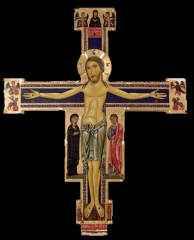
|
Cross Bonaventura Berlinghieri Early 13th Century Christus Triumphans (Christ Triumphant) |
|
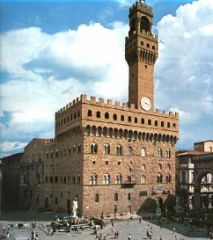
|
Palazzo Vecchio (dei Priori) Arnolfo di Cambio Florence 1299-1310 Gothic |
|
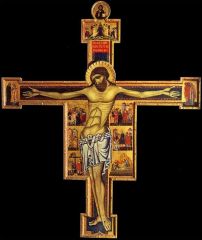
|
Crucifix Coppo di Marcovaldo Second half of 13th Century Christus Patiens (Suffering Christ) |
|
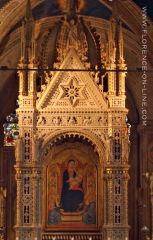
|
Tabernacle Andrea Orcagna Orsanmichele, Florence 1355-1359 Gothic |
|
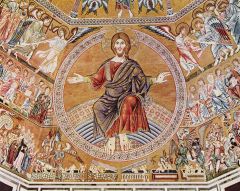
|
Last Judgment Coppo di Mrcovaldo Baptistery, Florence Second half of 13th Century Florantine |
|

|
Pistoia Pulpit Giovanni pisano Sant'Andrea, Pistoia 1298-1301 Gothic, Pisan |
|

|
Last Judgment Cavallini Sta.Cecelia, Rome 1290s Roman |
|
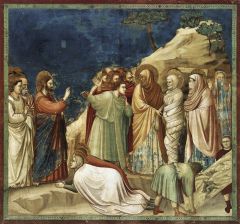
|
Raising of Lazarus Giotto Arena Chapel, Padua After 1305 Florentine |
|
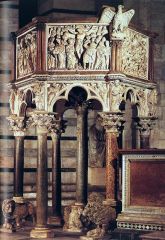
|
Pisa Baptistery Pulpit Nicola Pisano Pisa 1260 Gothic |
|
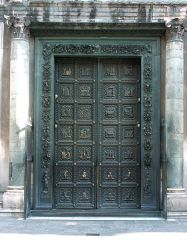
|
Art of Sculpture Andrea Pisano Campanile, Florence 1334-1337 Gothic |
|
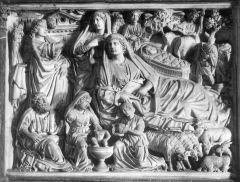
|
Annunciation, Nativity to the Shephards Nicola Pisano Pulpit, Baptistery, Pisa 1260 Gothic, Pisan |
|

|
Allegory of Good Government in the City and the Country Ambrogio Lorenzetti Palazzo Pubblico, Siena 1338-39 Sienese |
|
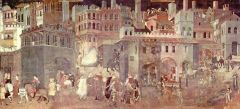
|
Allegory of Good Government in the City and the Country Ambrogio Lorenzetti Palazzo Pubblico 1338-39 Siense |
|
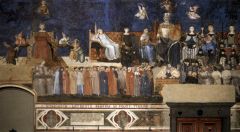
|
Allegory of Good Government in the City and the Country Ambrogio Lorenzetti Palazzo Pubblico 1338-39 Siense |
|
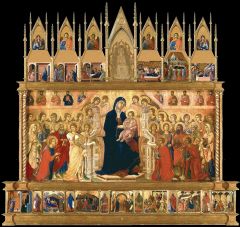
|
Maesta Duccio Siena Cathedral 1308-11 Siense |
|

|
Annunciation with Two Saints Simone Martini & Lippo Memmi Commissioned for Siena Cathedral 1333 Sienese |
|

|
Last Judgment (Damned Detail) Maitanni Orvieto, Cathedral 1310-30 Gothic |
|
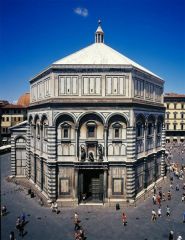
|
Baptistery Florence 1060-1150 Romanesque |
|

|
Triumph of the Church Andrea da Firenze Sta. Maria Novella, Florence 1366-68 Gothic |
|
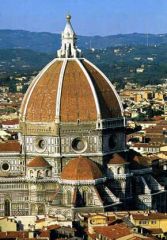
|
Cathedral Dome Brunelleschi Florence 1420-36 Italian Renaissance |
|
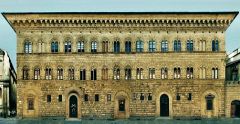
|
Palazzo Medici-Riccardi Michelezzo Florence 1446 Italian Renaissance |
|
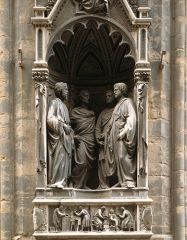
|
Four Crowned Martyrs Nanni di Banco Orsanmichele, Florence 1409-17 Italian Renaissance |
|

|
St. Mark Donetello Orsanmichele, Florence 1411-16 Italian Renaissance |
|
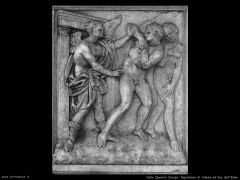
|
Expulsion Jacopo Della Quereia S. Petronio, Bologna 1429-34' Italian Renaissance |
|
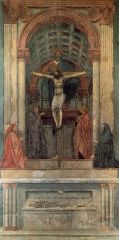
|
Trinity with Mary, John, and Two Donors Masaccio Sta. Maria Novella, Florence 1426-27 Italian Renaissance |
|

|
Adoration of the Magi Gentile da Fabriano Sta. Trinita, Florence 1423 Italian Renaissance |
|
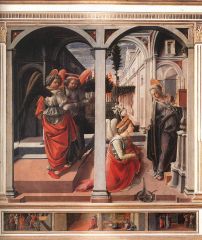
|
Annunciation Fra Filippo Lippi San Lorenzo, Florence 1440 Italian Renaissance |
|
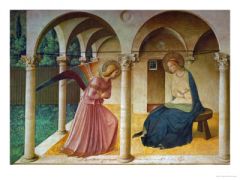
|
Annunciation Fra Angelico San Marco, Florence 1438-45 Italian Renaissance |
|
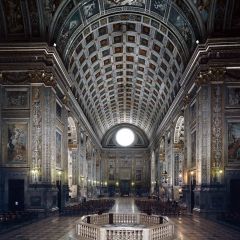
|
Sant' Andrea Alberti Mantau 1470 Italian Renaissance |
|
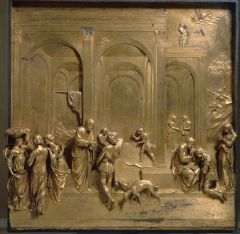
|
Jacob and Esau Ghiberti Baptistery, Florence 1435 Italian Renaissance |
|
|
Cimabue was influenced by Roman mosaics and paintings and Byzantine art. (t/f) |
True |
|
|
Cimabue style of painting was __________. |
Italo-Byzantine |
|
|
Cimabue use ___ ____ as a highlight on the folds of drapery. |
Gold Leaf |
|
|
Space is ambiguous because flat figures are placed against a flat gold background like icons. (t/f) |
True |
|
|
Giotto was student to _____. |
Cimabue |
|
|
How did Giotto revolutionize Florentine art? |
By painting volumetric, emotional figures |
|
|
Madonna and Child images emphasized the human nature of Jesus ______. |
Compassion |
|
|
What did the Madonna and Child that was painted on a pier of the loggia of Or San Michele? |
Grant Miracles |
|
|
Icons of the Virgin and other holy persons were believed to possess the power to render spiritual gifts as answers to prayers. (t/f) |
True |
|
|
The ____ opened a window to the holy person. |
Icons |
|
|
Rome was dominated by the _____ and a few strong families. |
Pope |
|
|
Why was Roman art traditional? |
It supported the papacy and its authority and its hierarchy and the dogma. |
|
|
What was Roman art full of? |
Propaganda, historical and political rhetoric |
|
|
The return of the Papal Curia to Rome renewed focus on the Early Christian past. (t/f) |
True |
|
|
The Papal conscious borrowed figures and compositions from the art. This was called? |
Electicism |
|
|
What was also an interest to the Papal? |
Byzantine art, Gothic sculpture, and northern European architecture |
|
|
How did Pietro Cavallini make his reputation? |
By restoring Early Christian Frescoes for Pope Nicholas III. |
|
|
Who was Pietro Cavallini confused with by Vasari? |
Giotto |
|
|
Cavallini painted three dimensional figures who inter with one another and had a sense of vitality and movement. (t/f) |
True |
|
|
Giotto's Madonna and child are designed to look real and the angels beside them respond to their presence with expression of awe. Their halos overlapping create a sense of depth. (T/F) |
True |
|
|
What was Nicola Pisano earliest documented work was? |
The pulpit for the Pisa Baptistery. |
|
|
Nicola Pisano's pulpit showed a revival of ______elements. |
classical |
|
|
What caused the Byzantine artist to flee to Pisa? |
The Fall of the Byzantium in 1204. |
|
|
Who made significant contributions to the construction of the buildings in the Pisa Cathedral complex? |
Byzantine artist |
|
|
The Pisa Pulpit reliefs show what? |
Classical Facial types, beards, hairdos, and drapery. |
|
|
The Baptistery Pulpit figures are ________ and placed parallel to the picture plane. They are ________. |
Restrained Unemotional |
|
|
Nicola Pisano Pulpit's figures were unemotional. (t/f) |
False |
|
|
The figures in the Nicolas Pisano's pulpit were _____. |
Seperate |
|
|
Giovanni Pisano style was _____ ____. He worked with his father, _____ _____ on commissions in Bologna, Perugia and Pisa. |
Gothic Naturalism Nicola Pisano. |
|
|
Giovanni received a commission for the _____ of Siena Cathedral. |
Facade |

